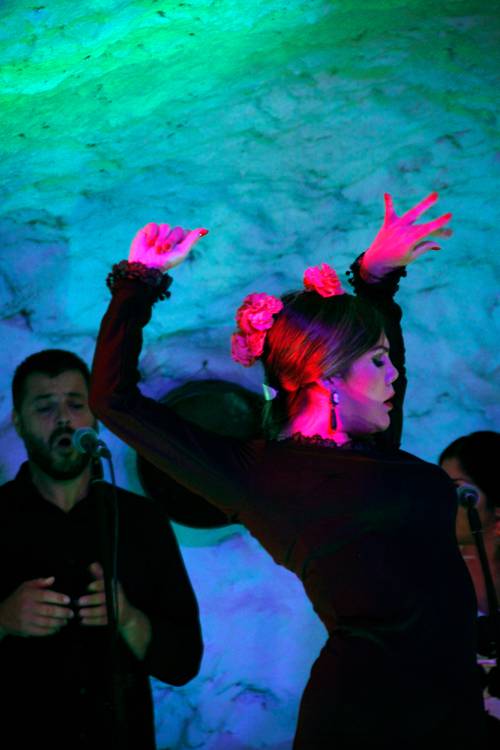
FAQ About The Role of Flamenco in Spanish Cultural Identity

What is Flamenco and where did it originate?
Flamenco is an expressive art form that comprises singing, guitar playing, dance, and vocalizations such as jaleo and palmas (handclaps). It originated in the region of Andalusia in Southern Spain and is deeply rooted in the cultural traditions of the Andalusian Gypsies (Gitanos), along with Moorish, Jewish, and Christian influences.

How does Flamenco contribute to Spanish cultural identity?
Flamenco plays a significant role in Spanish cultural identity as it embodies the diverse history and cultural syntheses of Spain. It serves as a form of storytelling and emotional expression, reflecting the struggles and spirit of the Andalusian people. Flamenco is celebrated nationally and internationally as a quintessential Spanish cultural symbol.

What are the main components of Flamenco?
The main components of Flamenco are cante (singing), toque (guitar playing), and baile (dance). Each component is deeply intertwined, creating an emotional and rhythmic experience. Additionally, palmas (hand clapping) and jaleo (vocal interjections) support and enhance the performance.

Why is Andalusia considered the birthplace of Flamenco?
Andalusia is considered the birthplace of Flamenco due to its unique cultural melting pot, where diverse influences converged, including those of the Gypsies, Moors, Jews, and native Andalusians. The oral traditions and historical backdrop of this region provided a fertile ground for Flamenco's development.

How has Flamenco evolved over time?
Flamenco has evolved from being a marginalized Gypsy art form to achieving recognition on international stages. Over time, it has incorporated various musical elements from Latin America, classical music, and jazz, broadening its appeal. It is now performed on formal stages worldwide, showcasing its adaptability and continuing relevance.

What are some common misconceptions about Flamenco?
A common misconception is that Flamenco is only a dance form, while, in reality, it also includes singing and guitar playing as fundamental elements. Another misconception is that all Flamenco music and dance are the same, whereas the genre includes many different palos, or styles, each with unique characteristics.

How is Flamenco performed and where can one experience it?
Flamenco can be experienced in various settings, from informal peñas (Flamenco clubs) to grand theater productions. Performances involve a singer, guitarist, and dancer, showcasing the dynamic interaction between these elements. Andalusia, particularly cities like Seville, Granada, and Jerez, are renowned for authentic Flamenco experiences.

What are the key styles or palos in Flamenco?
Flamenco comprises various styles, known as palos, each possessing unique rhythms and moods. Some well-known palos include bulerías, soleá, alegrías, fandangos, and tangos. These styles range from the deeply emotional and solemn to the lively and festive, reflecting diverse human emotions and themes.

How does Flamenco music differ from other Spanish music styles?
Flamenco music is distinct due to its intricate rhythms, improvisational nature, and emotive intensity. It often uses a unique 12-beat compás and employs a characteristic form of vocalization. Unlike other Spanish styles, such as zarzuela or classical Spanish music, Flamenco is rooted in spontaneous expression and personal interpretation.

Who are some famous Flamenco artists?
Several renowned Flamenco artists have contributed to its global acclaim, including singers such as Camarón de la Isla and guitarists like Paco de Lucía. Dancers like Antonio Gades and Joaquín Cortés are celebrated for their contributions to the development and popularization of Flamenco dance.

What role do the guitar and singing play in Flamenco performances?
The guitar serves as both accompaniment and a featured instrument, providing the harmonic and rhythmic foundation for Flamenco performances. Singing is the emotional core, often conveying stories of love, loss, and daily struggles. Together, they create a dialog where the guitar complements the singer's emotive expressions.

Why was Flamenco declared an Intangible Cultural Heritage by UNESCO?
Flamenco was declared an Intangible Cultural Heritage by UNESCO in 2010 due to its deep cultural roots and significance in Spanish history. It embodies a rich tradition of artistic expression and reflects the shared cultural diversity and historical experiences of the Andalusian people.

What is the significance of costume and attire in Flamenco?
Costumes in Flamenco, particularly the traditional flamenco dress, enhance the visual and dramatic effects of the dance. The attire, with its vibrant colors and flowing ruffles, helps accentuate the dancer's movements and contribute to the overall visual narrative of a performance.

What influence have the Andalusian Gypsies had on Flamenco?
The Andalusian Gypsies, or Gitanos, have had a profound influence on Flamenco, contributing significantly to its development and soul. Their unique blend of cultural traditions, stories, and musical styles form a crucial part of Flamenco's essence, helping shape its identity as a symbol of resilience and cultural expression.

How has Flamenco been received internationally?
Internationally, Flamenco has been embraced for its passionate and deeply emotional performances. Various festivals celebrate Flamenco worldwide, attracting enthusiasts eager to experience its intensity. This global appreciation has spurred further innovations and collaborations, cementing Flamenco’s place as a celebrated art form.

What is the role of improvisation in Flamenco?
Improvisation is key to Flamenco, allowing artists to inject personal style and emotion into their performances. While Flamenco follows structured rhythmic patterns, the performers often interpret and personalize their sections, ensuring each performance is unique and infused with spontaneous artistry.

How can one start learning Flamenco dance or music?
To start learning Flamenco dance or music, one can enroll in Flamenco classes offered by dance studios or music schools, locally or online. Beginner classes typically cover basic techniques and rhythms, progressively advancing to more complex styles and performances. Enthusiasm and dedication are essential for mastering the intricacies of Flamenco.

How are Flamenco competitions and festivals celebrated in Spain?
Flamenco competitions and festivals are important cultural events in Spain, showcasing both up-and-coming and established artists. Events such as the Bienal de Flamenco in Seville and the Festival de Jerez offer platforms for performances, workshops, and discussions, promoting Flamenco's rich heritage and encouraging new interpretations.

What is the role of traditional Flamenco in modern Spanish society?
In modern Spanish society, traditional Flamenco serves as a vital cultural link, connecting people to their heritage and history. It continues to be celebrated and adapted within contemporary artistic practices, remaining relevant by fostering cultural identity and community values across generations.

What are some challenges in preserving Flamenco traditions?
Preserving Flamenco traditions amidst modernity poses challenges such as commercialization, which can dilute its authenticity. Supporting traditional practices through education, local funding, and cultural policies is crucial to ensuring Flamenco's integrity and continued relevance as a cherished cultural legacy.
